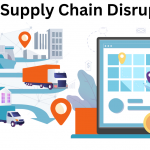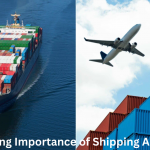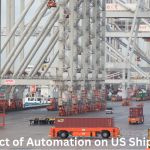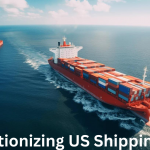In today’s highly competitive global market, the efficiency of a supply chain can make or break a business. As industries continue to evolve and consumer demands change rapidly, supply chain optimization has become essential for maintaining profitability, enhancing customer satisfaction, and ensuring long-term sustainability. Whether you’re a small business or a multinational corporation, optimizing your supply chain can lead to significant cost reductions, improved speed to market, and enhanced adaptability. This article explores key strategies, benefits, and technologies that can help in optimizing your supply chain.
Understanding Supply Chain Optimization
Supply chain optimization refers to the process of enhancing the efficiency and effectiveness of your supply chain by minimizing costs and improving processes across all stages—from sourcing raw materials to delivering finished products to customers. The objective is to ensure that every component of the supply chain is functioning at its best while aligning with overall business goals.
Optimization typically involves streamlining operations, leveraging technology, reducing waste, and improving communication across the supply chain network. Successful optimization is not a one-time project but an ongoing process that requires constant monitoring, evaluation, and adaptation.
The Importance of Supply Chain Optimization
- Cost Reduction: One of the primary goals of optimizing a supply chain is reducing operational costs. This can be achieved by improving inventory management, reducing transportation costs, and eliminating inefficiencies. Cost savings in these areas can have a direct impact on a company’s bottom line.
- Improved Customer Service: An optimized supply chain enables companies to meet customer demands more efficiently. By ensuring products are available when and where they are needed, businesses can enhance customer satisfaction, leading to increased loyalty and repeat business.
- Faster Time-to-Market: In a highly competitive market, speed is critical. By optimizing supply chain processes, companies can reduce lead times and get products to market faster, giving them a competitive edge.
- Risk Mitigation: An efficient supply chain is more resilient to disruptions such as natural disasters, supply shortages, or geopolitical events. By optimizing and diversifying their supply chains, businesses can reduce the risks associated with these challenges.
- Sustainability: With increasing consumer and regulatory focus on sustainability, an optimized supply chain can help businesses reduce their environmental footprint. Efficient use of resources, better waste management, and sustainable sourcing practices all contribute to a greener supply chain.
Key Strategies for Supply Chain Optimization
- Data-Driven Decision Making
The modern supply chain generates a vast amount of data, from order processing and shipping to customer preferences and feedback. Leveraging this data to make informed decisions is crucial for optimization. Through advanced analytics, businesses can predict demand trends, optimize inventory levels, and identify inefficiencies. Data-driven decision-making also helps in forecasting and avoiding overproduction or stockouts.
Using tools like demand forecasting software, real-time data analytics, and machine learning models allows businesses to anticipate market fluctuations and adjust their supply chain accordingly.
- Improved Supplier Relationships
Strong relationships with suppliers can make or break a supply chain. Establishing clear communication channels, building trust, and collaborating closely with suppliers can lead to better pricing, improved delivery times, and enhanced quality control.
By treating suppliers as strategic partners rather than transactional vendors, companies can gain greater transparency into potential risks and delays. This partnership approach also encourages suppliers to innovate and improve their processes, ultimately benefiting the entire supply chain.
- Inventory Management
Poor inventory management can lead to excess stock, wasted resources, and high storage costs. On the flip side, insufficient inventory can result in stockouts, missed sales, and dissatisfied customers. Achieving the right balance through optimized inventory management is crucial.
Strategies such as just-in-time (JIT) inventory, where products are produced or procured only as needed, can significantly reduce holding costs. Additionally, investing in inventory management software that tracks stock levels in real-time can help businesses make quick adjustments to prevent overstocking or stockouts.
- Automation and Technology Integration
Automation has revolutionized supply chain management. Technologies such as robotics, artificial intelligence (AI), and the Internet of Things (IoT) are increasingly being used to streamline various supply chain processes. Automated warehousing, for example, can reduce manual errors, improve speed, and lower labor costs. Similarly, AI-powered analytics can predict demand surges and adjust production schedules accordingly.
Additionally, integrating supply chain management (SCM) software allows companies to manage their supply chains from end to end in real-time. This integration improves visibility, communication, and collaboration across all departments and partners.
- Sustainability Initiatives
Consumers and regulators are increasingly demanding that businesses adopt more sustainable practices. Optimizing the supply chain for sustainability not only meets these demands but can also lead to long-term cost savings. For example, businesses can optimize their transportation routes to reduce fuel consumption, switch to eco-friendly packaging, and source raw materials from sustainable suppliers.
Moreover, companies that prioritize sustainability can enhance their brand reputation, attract eco-conscious customers, and even qualify for green certifications or tax incentives.
- Risk Management and Contingency Planning
Disruptions to the supply chain—whether due to natural disasters, political instability, or pandemics—can have devastating effects on businesses. Optimizing the supply chain means preparing for potential disruptions by diversifying suppliers, maintaining safety stock, and creating contingency plans.
Risk management tools can help businesses identify and mitigate potential risks before they become critical. Regularly reviewing and updating contingency plans ensures that the supply chain remains resilient and can quickly adapt to unexpected challenges.
Role of Technology in Supply Chain Optimization
In today’s digital era, technology plays a central role in optimizing supply chains. Below are some cutting-edge technologies that are transforming supply chain management:
- Blockchain: Blockchain technology ensures transparency, security, and traceability within the supply chain. With blockchain, businesses can track products from the point of origin to the end consumer, reducing fraud and ensuring authenticity.
- Artificial Intelligence (AI): AI-powered tools can analyze large datasets to predict demand, optimize routes, and improve decision-making. AI also enables more efficient production planning and real-time problem-solving.
- Internet of Things (IoT): IoT devices provide real-time tracking of products, inventory, and transportation. This connectivity allows businesses to monitor their supply chain continuously, leading to faster response times and better overall visibility.
- Robotics and Automation: Robotics streamline warehouse operations, reduce human error, and speed up repetitive tasks like picking and packing. Automation also reduces the reliance on manual labor, lowering costs and increasing efficiency.
Conclusion
Optimizing your supply chain is essential for staying competitive in today’s fast-paced, global economy. By leveraging data analytics, fostering strong supplier relationships, integrating technology, and focusing on sustainability, businesses can reduce costs, improve efficiency, and enhance customer satisfaction. Supply chain optimization is an ongoing process that requires continuous evaluation and adaptation, but the long-term benefits far outweigh the challenges, making it a key factor in business success.
FAQs
1. What is supply chain optimization?
Supply chain optimization involves improving the efficiency and effectiveness of all aspects of the supply chain. This includes processes like sourcing, manufacturing, inventory management, distribution, and delivery. The goal is to reduce costs, improve speed to market, and enhance overall performance while meeting customer demands.
2. Why is supply chain optimization important?
Supply chain optimization is crucial for businesses to stay competitive in today’s fast-paced market. It helps reduce costs, improve customer satisfaction, and mitigate risks. An optimized supply chain can also enhance sustainability efforts and create more resilience against disruptions.
3. How does technology help in optimizing the supply chain?
Technology plays a central role in modern supply chain optimization. Tools like artificial intelligence (AI), blockchain, the Internet of Things (IoT), and automation can enhance visibility, predict demand trends, and reduce inefficiencies. These technologies also enable real-time tracking and provide data for making informed decisions.
4. What role does data analytics play in supply chain optimization?
Data analytics helps companies gather and analyze data from various stages of the supply chain. By utilizing advanced analytics, businesses can forecast demand, optimize routes, manage inventory levels, and identify inefficiencies. This data-driven approach leads to more accurate decision-making and improves overall performance.
5. How do strong supplier relationships impact supply chain optimization?
Strong supplier relationships foster better communication, trust, and collaboration, leading to improved pricing, product quality, and delivery times. By working closely with suppliers, businesses can gain transparency into potential risks and resolve issues faster, ensuring a smoother supply chain.




